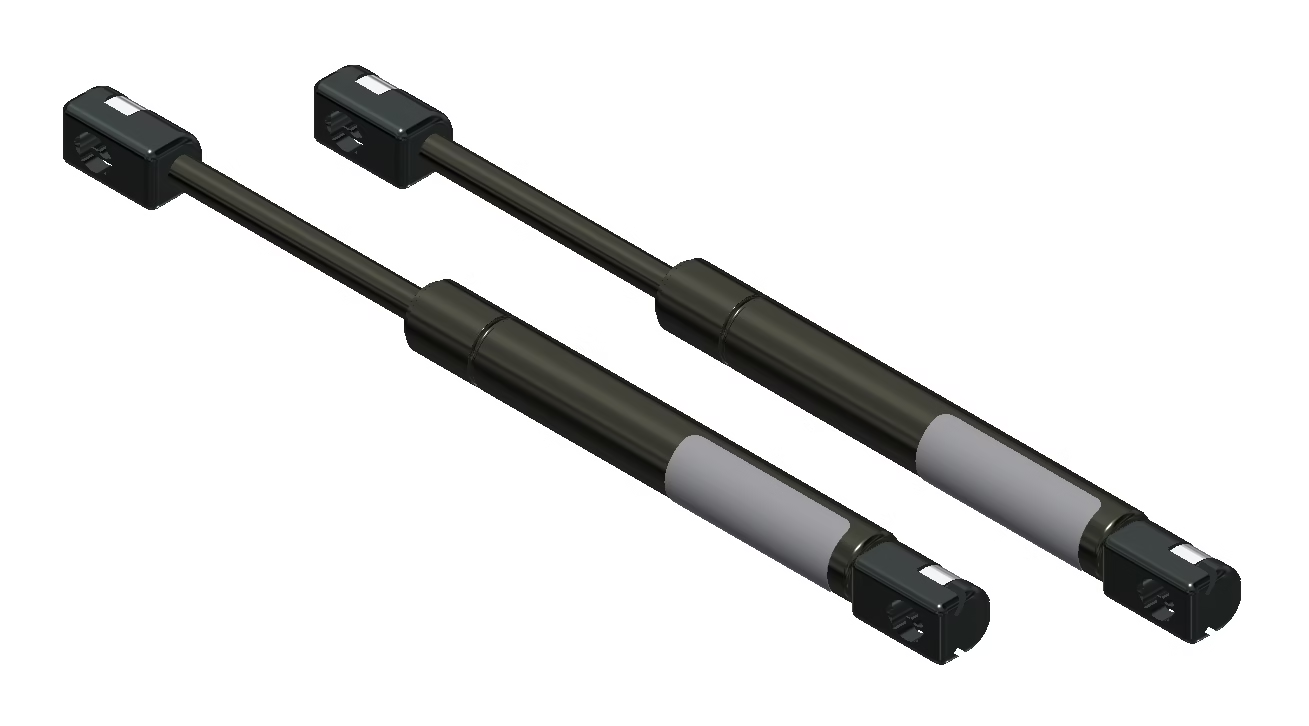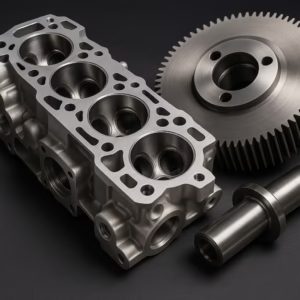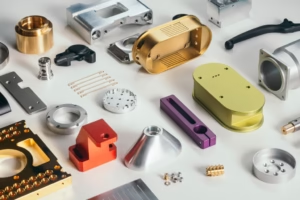Key Components in The Automotive Industry-Gas Springs
With the rapid development of the automotive industry, the demands for safety, comfort and intelligence have driven the innovation of many key components. Among them, gas springs, as a highly efficient energy storage and release device, play an increasingly important role in automotive design due to their unique performance advantages. From improving user experience to optimizing mechanical structure, gas springs are becoming an indispensable component in modern automotive engineering.
Working principle and technical characteristics
Gas springs are a mechanical device that stores energy by compressing inert gas (such as nitrogen). Its core consists of a sealed cylinder, a piston rod, and high-pressure gas. When an external force is applied, the piston rod compresses the gas to store energy; when the external force is released, the gas expands and pushes the piston rod to reset, achieving smooth motion control. Compared with traditional mechanical springs, gas springs have the following advantages:
Controllable damping characteristics: By adjusting the gas pressure and valve design, the extension and retraction speed and force can be accurately controlled.
Maintenance-free and long life: The sealed structure reduces wear and tear, and the service life can reach hundreds of thousands of cycles.
Lightweight and compact: Under the same load, the gas spring is smaller in size, which helps to reduce the weight of the vehicle body.
Silence and smoothness: There is no metal friction noise, and the movement process is smoother.
Application scenarios
In automobile design, the application of gas springs covers multiple dimensions from functionality to comfort:
- Improve convenience: intelligent control of doors, tailgates, and hoods
Electric tailgate system: High-end SUVs and new energy vehicles widely use electric tailgates driven by gas springs, which can be opened and closed automatically by users through buttons, foot sensors or mobile phone apps. For example, the tailgate system of Tesla Model Y integrates intelligent gas springs, which supports custom opening angles and anti-pinch functions.
Hood support: Gas springs replace traditional mechanical brackets, making the hood opening easier and reducing space.
- Enhance comfort: Optimization of seats and suspension systems
Seat adjustment: The lumbar support, height adjustment, and folding functions of high-end car seats rely on gas springs to achieve stepless adjustment, providing personalized support for drivers.
Active suspension system: Some models introduce gas springs in the suspension, which adjust the air pressure in real time to adapt to different road conditions and improve driving stability (such as Audi’s adaptive air suspension).
- Safety and functional expansion
Collision energy absorption protection: In key parts such as the battery compartment cover of new energy vehicles, gas springs can be designed to quickly release energy during collisions to reduce the risk of structural damage.
Roof and sunroof system: The folding roof of convertibles and the opening and closing mechanisms of panoramic sunroofs all require gas springs to provide stable power.
Technology Trends: Intelligent and Sustainable Development
As the automotive industry transforms towards electrification and intelligence, the technological iteration of gas springs is also accelerating:
Electronic Gas Spring (E-Gas Spring)
By integrating sensors and electronically controlled valves, gas springs can adjust the damping force in real time according to the vehicle status (such as vehicle speed and load). For example, in the scenario of autonomous driving, electronically controlled gas springs can cooperate with the automatic door opening and closing system to achieve more precise position control.
Application of lightweight materials
The use of materials such as aluminum alloy cylinders and carbon fiber piston rods further reduces weight. The lightweight tailgate system of Porsche Taycan achieves high energy consumption ratio through such technology.
Environmental protection and recyclable design
Regulations such as the EU ELV Directive promote the development of gas springs towards oil-free and detachable designs. Some manufacturers have launched recyclable seals and bio-based lubricants to reduce environmental pollution.
Market prospects and challenges
According to the report of Global Market Insights, the global automotive gas spring market size has exceeded US$1.5 billion in 2023 and is expected to grow at an average annual rate of 6.5% by 2030. However, the industry still needs to face the following challenges:
Cost control: The R&D cost of high-end electronic control systems is high, and costs need to be reduced through large-scale production.
Adaptability to extreme environments: High and low temperatures and dusty environments place higher demands on sealing performance.
Standardization and compatibility: The installation interfaces and parameters of different models vary greatly, and it is necessary to promote the unification of industry standards.
Although small, gas springs play a leveraging role in the “user experience revolution” of the automotive industry. From traditional mechanical components to parts of intelligent systems, their technological evolution not only reflects the refinement of engineering design, but also reflects the automotive industry’s unremitting pursuit of safety, comfort and sustainability. In the future, with breakthroughs in materials science and Internet of Things technology, gas springs may become an important element in defining the next generation of smart cars.
Lorem ipsum dolor sit amet, consectetur adipiscing elit. Ut elit tellus, luctus nec ullamcorper mattis, pulvinar dapibus leo.
If you have any needs, contact us via email at Lynnyao@prototekparts.com or phone: +86-0792-86372550
Tags:
- Gas Spring

























































